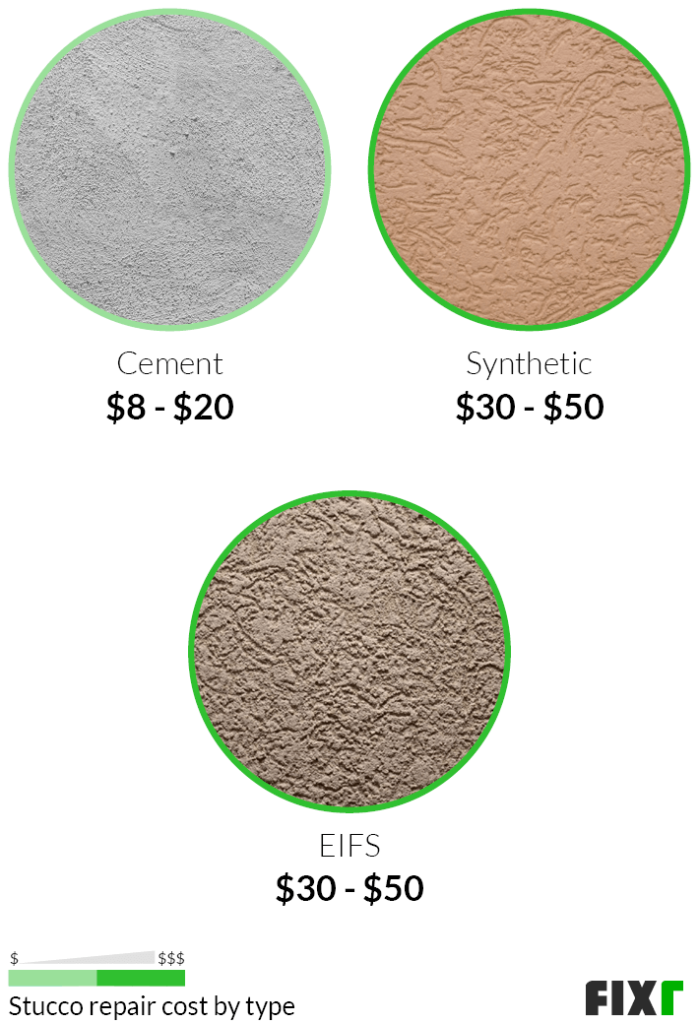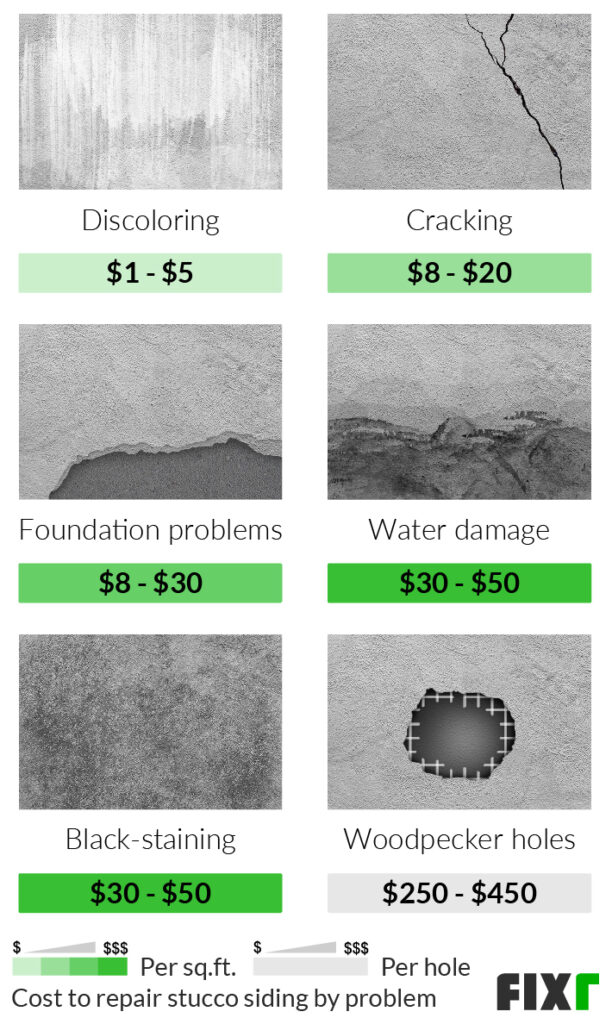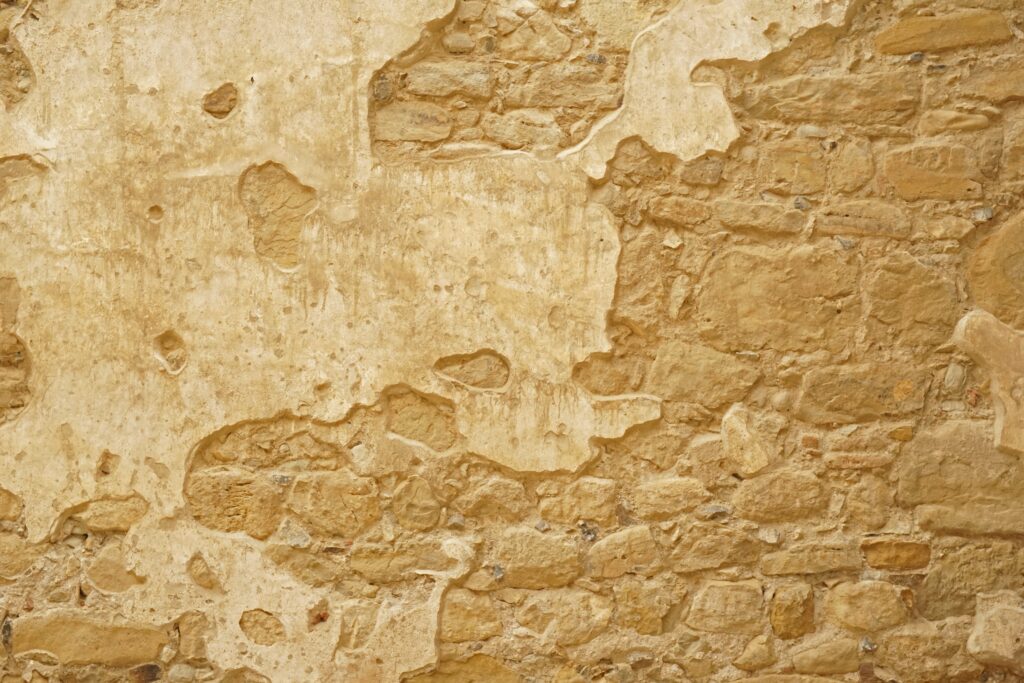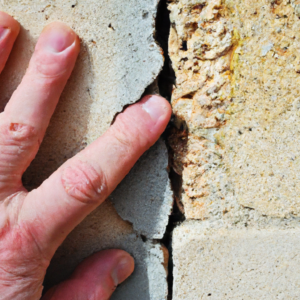Have you ever wondered about the costs associated with repairing stucco? If so, this article is here to provide you with a brief overview. From minor repairs to more extensive renovations, understanding the financial implications of stucco repair is crucial for homeowners. Whether you are looking to update the exterior of your house or fix small damages, we will delve into the key factors that contribute to stucco repair costs. So, let’s explore the world of stucco repairs together and gain valuable insight into the expenses involved.
Factors Affecting Stucco Repair Costs
When it comes to stucco repair costs, several factors come into play. Understanding these factors can help you estimate how much you might need to spend on repairing your stucco. From the extent of damage to accessibility of the area, each aspect can influence the overall cost. So, let’s dive into these factors and learn more about how they affect stucco repair costs.

Extent of Damage
The first factor to consider is the extent of damage to your stucco. Minor cracks may be relatively easy and inexpensive to fix compared to larger cracks or even structural damage. Let’s explore the different levels of damage and their potential impact on repair costs:
Minor Cracks
Minor cracks, such as hairline cracks, can often be repaired without the need for extensive intervention. These cracks might be a result of normal wear and tear or minor settling of the building. Repairing these small cracks is usually a quick and straightforward process, which can be completed using basic materials and tools. Therefore, the cost associated with fixing minor cracks is typically minimal.
Medium-sized Cracks
Medium-sized cracks require a bit more attention than minor cracks. These cracks are usually wider and may indicate a more significant issue with the stucco. Repairing medium-sized cracks typically involves filling the cracks with an appropriate patching compound and ensuring proper adhesion. The cost of repairing such cracks is slightly higher compared to minor cracks.
Large Cracks
Large cracks are more serious and may require more extensive repairs. These cracks can compromise the structural integrity of the stucco, leading to potential water damage and further deterioration. Repairing large cracks usually involves removing the damaged stucco, addressing any underlying issues, and then applying new stucco to ensure a seamless finish. Due to the complexity and time-consuming nature of repairing large cracks, the associated costs are significantly higher.
Pitting and Chips
Pitting and chips occur when small chunks of stucco break off, leaving behind irregular textures on the surface. Repairing pitting and chips involves patching these areas with a suitable stucco mix or patching compound. While the cost may vary depending on the severity and extent of the damage, pitting and chip repair is generally less expensive compared to fixing large cracks or structural damage.
Holes and Structural Damage
Holes and structural damage pose a more severe challenge for stucco repair. These issues may require extensive repairs, including replacing damaged insulation, addressing underlying structural problems, and rebuilding sections of stucco. The cost of repairing holes and structural damage can be significantly higher than other types of repairs due to the amount of labor and materials involved.
Water Damage
Water damage is a common issue with stucco, especially if the moisture finds its way behind the stucco layer. Repairing water-damaged stucco typically requires identifying and addressing the source of the water intrusion, drying out affected areas, and repairing or replacing the damaged stucco. The cost of repairing water damage can vary depending on the extent of the damage and the necessary remediation steps.
Location of Damage
The location of the stucco damage can also influence the repair costs. Different areas of your home or building may require different repair techniques, materials, and labor. Let’s explore the different locations where stucco damage can occur:
Exterior Wall
Damage to the exterior wall is perhaps the most common type of stucco damage. Whether it’s due to weathering, aging, or other factors, the exterior wall is exposed to various elements that can lead to cracks, chips, or other forms of damage. Repairing stucco on the exterior wall typically involves patching the damaged areas with a stucco mix or patching compound, followed by proper painting or finishing. The cost of repairing the exterior wall can vary depending on the extent and severity of the damage.
Interior Wall
Although less common, stucco damage can also occur on interior walls. This type of damage is often caused by moisture issues or structural problems. Repairing stucco on interior walls follows a similar process to the exterior wall, including patching the damaged areas and applying the appropriate finishing. The repair costs for interior walls are usually comparable to those of the exterior walls.
Ceiling
Stucco damage on the ceiling, commonly referred to as a “popcorn ceiling,” can be challenging to repair. The textured nature of the ceiling requires extra care and attention to ensure a seamless finish. Repairing stucco on the ceiling may involve removing the damaged areas, applying a new texture, and then painting or finishing the ceiling. Due to the intricacies involved in repairing a popcorn ceiling, the costs can be slightly higher than repairing stucco on walls.
Foundation
Damage to the stucco on the foundation can be a serious concern, as it can impact the structural stability of the building. Repairing stucco on the foundation typically involves addressing any underlying issues, such as settling or water intrusion, and then applying the necessary repairs to the stucco. Due to the crucial nature of maintaining a stable foundation, the costs associated with repairing stucco on the foundation can be higher compared to other areas.
Trim and Molding
Stucco damage to trim and molding is often caused by physical impact or moisture-related issues. Repairing stucco on trim and molding may involve removing and reinstalling the damaged pieces, as well as addressing any underlying structural issues. The repair costs can vary depending on the complexity and intricacy of the trim or molding.
Type of Stucco
The type of stucco used on your property can also impact the repair costs. There are different types of stucco, each with its own characteristics and requirements. Let’s explore the most common types of stucco and their potential implications on repair costs:
Traditional Stucco
Traditional stucco, also known as cement-based stucco or Portland cement stucco, is a time-tested and widely used stucco material. Repairing traditional stucco usually involves applying a compatible stucco mix or patching compound to the damaged areas, ensuring proper adhesion and color match with the existing stucco. The cost of repairing traditional stucco can vary depending on the extent of the damage and the need for color-matching or repainting.
Synthetic Stucco
Synthetic stucco, also known as Exterior Insulation and Finish System (EIFS), is a more modern type of stucco that combines foam insulation and a synthetic finish. Repairing synthetic stucco often involves addressing not only the surface damage but also potential issues with the insulation layer underneath. The repair costs for synthetic stucco can be higher compared to traditional stucco due to the additional complexity of the system.
Exterior Insulation and Finish System (EIFS)
EIFS, as mentioned earlier, is a specific type of synthetic stucco that includes an insulation layer. Repairing EIFS requires expertise in both stucco repair and insulation-related work. The cost of repairing EIFS can be higher compared to other types of stucco due to the specialized knowledge and materials involved.
Accessibility of the Area
The accessibility of the stucco repair area can impact the time, effort, and equipment required to complete the repairs. Areas that are easily accessible from the ground level generally require less effort and equipment compared to areas that are higher or harder to reach. Let’s explore the different aspects of accessibility and their potential impact on repair costs:
Ground-level Access
Stucco damage that is easily accessible from the ground level typically requires minimal additional equipment or setup. Repairing stucco in such areas is relatively straightforward and can be completed using basic tools and materials. As a result, the repair costs for ground-level access areas are typically lower compared to hard-to-reach areas.
Higher or Hard-to-reach Areas
Stucco damage that is located in higher or harder-to-reach areas, such as second-story walls or ceilings, may require additional equipment or scaffolding to safely access and complete the repairs. Depending on the height and complexity of the area, the cost of repairing stucco in such locations can be higher due to the need for specialized equipment and increased labor.
Scaffolding or Lift Equipment Needed
In some cases, repairing stucco may require the use of scaffolding or lift equipment to reach the damaged areas effectively. Whether it’s a large-scale repair project or accessing areas with limited accessibility, the use of scaffolding or lift equipment can increase both labor and rental costs. The overall repair costs can be significantly higher when additional equipment is needed.

Labor Costs
Labor costs play a significant role in determining the overall expense of stucco repairs. The complexity of the project, the experience and skill of the workers, and the hourly rates can all influence the labor costs. Let’s explore the different factors related to labor costs and how they affect the overall repair expenses:
Hourly Rates
Different contractors and regions may have varying hourly rates for stucco repair work. Hourly rates can fluctuate based on factors such as demand, skill level, and the company’s overhead costs. It is essential to consider these rates when estimating labor costs for your stucco repair project.
Project Complexity
The complexity of the stucco repair project can impact the labor costs involved. Projects that require extensive repairs, structural reinforcement, or the removal and reinstallation of certain elements will typically require more time and effort from the workers. As a result, the labor costs for complex projects are likely to be higher compared to simpler repair jobs.
Experience and Skill of the Workers
The experience and skill level of the workers involved in the stucco repair can also influence labor costs. Highly skilled workers may command higher rates due to their expertise and quality of work. While opting for experienced professionals can ensure a high-quality repair job, it may also result in slightly higher labor costs.
Material Costs
In addition to labor costs, material costs also contribute to the overall expenses of stucco repairs. Different materials are required for different repair scenarios, and the quantity of materials needed can vary based on the extent of the damage. Let’s explore some of the common materials and their potential impact on repair costs:
Stucco Mix or Patching Compound
Stucco repairs typically involve the use of a compatible stucco mix or patching compound. The cost of these materials can vary based on the brand, quality, and quantity required for the repair job. Minor repairs may only require a small amount of patching compound, while more extensive repairs can lead to higher material costs.
Primer and Paint
After repairing the stucco, it is often necessary to apply a primer and paint to achieve a uniform finish. The cost of primer and paint can depend on the brand, color, and quality. The size of the repair area can also influence the amount of primer and paint required, thereby affecting the material costs.
Mesh or Wire for Reinforcement
In some cases, reinforcing mesh or wire may be necessary for added stability and durability of the repaired stucco. The cost of mesh or wire can vary depending on the material and size. For specific repair scenarios, such as large cracks or structural damage, using reinforcing materials can add to the material costs.
Tools and Equipment
Repairing stucco requires the use of various tools and equipment, such as trowels, brushes, mixing buckets, and safety gear. While these costs are generally considered incidental, they can still contribute to the overall material costs. The need for specialized tools or equipment can further impact the material expenses.

Additional Repairs Required
In some cases, stucco repairs may involve addressing additional issues beyond the stucco damage itself. These additional repairs can add to the overall costs of the project. Let’s explore some common additional repairs that may be necessary during stucco repair:
Removing and Reinstalling Trim
If the stucco damage is adjacent to trim or molding, it may be necessary to remove and reinstall these elements during the repair process. The additional labor and material costs associated with removing, reinstalling, or replacing trim should be considered when estimating the overall repair expenses.
Repairing Underlying Structures
In instances where stucco damage is caused by underlying structural issues, such as settling or water damage, it is crucial to address these problems before repairing the stucco. Repairing the underlying structures can involve additional labor, materials, and potentially specialized expertise, leading to an increase in the overall repair costs.
Replacing Damaged Insulation
Damage to the stucco may also affect the insulation layer underneath. If the insulation is compromised, it may need to be repaired or replaced along with the stucco. The cost of replacing damaged insulation depends on the type of insulation used, the extent of damage, and the labor required for installation.
Permit and Inspection Fees
When repairing stucco, it is important to consider any associated permit and inspection fees. Depending on local regulations and the extent of the repair, you may need to secure a building permit and have the work inspected. Permit and inspection fees can vary depending on your location and the complexity of the repair project. It is essential to check with your local authorities to determine the exact requirements and associated costs.
Local Building Permits
Some cities or municipalities require permits for stucco repairs. These permits typically come with a fee, and the cost can vary depending on the location and scope of the repair project. Applying for the necessary permits before starting the repairs ensures compliance with local regulations and helps avoid potential penalties.
Inspection Fees
In addition to permit fees, inspections may be required to ensure the repairs meet the necessary standards and building codes. The cost of inspections can vary depending on the jurisdiction and the number of inspections required throughout the repair process. Budgeting for these inspection fees is essential to avoid any surprises during the project.

Seasonal Demand
Seasonal demand can also influence the cost of stucco repairs. During peak seasons, such as spring or summer, when many homeowners undertake repair and renovation projects, contractors may be in higher demand. Increased demand can lead to higher labor costs as contractors prioritize certain projects over others. It is advisable to plan your stucco repair during off-peak seasons, if possible, to potentially secure lower labor costs.
Contractor’s Reputation
The reputation of the contractor you hire can impact the overall cost of your stucco repair project. Contractors with a solid reputation for quality workmanship and customer satisfaction may charge higher rates compared to less reputable contractors. While opting for a reputable contractor can provide peace of mind and assurance of a job well done, it is essential to consider the potential impact on the overall repair costs.
Quality of Work
Contractors with a reputation for delivering high-quality work often have the expertise and resources to handle stucco repairs efficiently. Their attention to detail and commitment to delivering flawless results may come at a higher cost than contractors with a less established reputation. However, investing in quality workmanship can result in a longer-lasting and more durable stucco repair.
Customer Reviews
Reading customer reviews and testimonials can give you valuable insights into a contractor’s reliability, professionalism, and overall customer satisfaction. Contractors with positive reviews may have higher costs due to their established reputation and demand. However, the assurance of hiring a contractor with a proven track record can help ensure a smooth and successful stucco repair project.
Years of Experience
Contractors with extensive experience in stucco repair may command higher rates, considering their expertise and accumulated knowledge over the years. Their familiarity with a wide range of stucco issues and repair techniques can help ensure a comprehensive and effective repair, warranting the higher costs associated with their services.
In conclusion, several factors can influence the overall costs of stucco repair. The extent of damage, location of damage, type of stucco, accessibility of the area, labor costs, material costs, additional repairs required, permit and inspection fees, seasonal demand, and the contractor’s reputation all play a role in determining the expenses. Understanding these factors can help you estimate the costs and make informed decisions when it comes to repairing your stucco. Remember to consider multiple quotes from reputable contractors to ensure you receive the best value for your investment in stucco repair. With careful planning and consideration, you can restore and maintain the beautiful appearance and structural integrity of your stucco.





